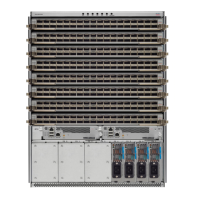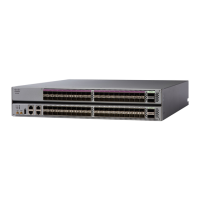dry cleaning techniques can be effective; refer to your site's fiber-optic connection cleaning
procedures.
• Do not touch the ends of connectors. Touching the ends can leave fingerprints and cause other
contamination.
• Inspect routinely for dust and damage. If you suspect damage, clean and then inspect fiber ends under a
microscope to determine if damage has occurred.
Statement 1051—Laser Radiation
Invisible laser radiation may be emitted from disconnected fibers or connectors. Do not stare into beams or
view directly with optical instruments.
Warning
Connect to the Console Port
Before you create a network management connection for the router or connect the router to the network, you
must create a local management connection through a console terminal and configure an IP address for the
router. You also can use the console to perform the following functions (each of which can be performed
through the management interface after you make that connection):
• Configure the router using the command-line interface (CLI).
• Monitor network statistics and errors.
• Configure Simple Network Management Protocol (SNMP) agent parameters.
• Download software updates.
The system console port is an RJ-45 receptacle for connecting a data terminal to perform the initial configuration
of NCS 5500 fixed-port chassis. The console cable is shipped with the hardware.
Connect Router to the Network
2
Connect Router to the Network
Connect to the Console Port

